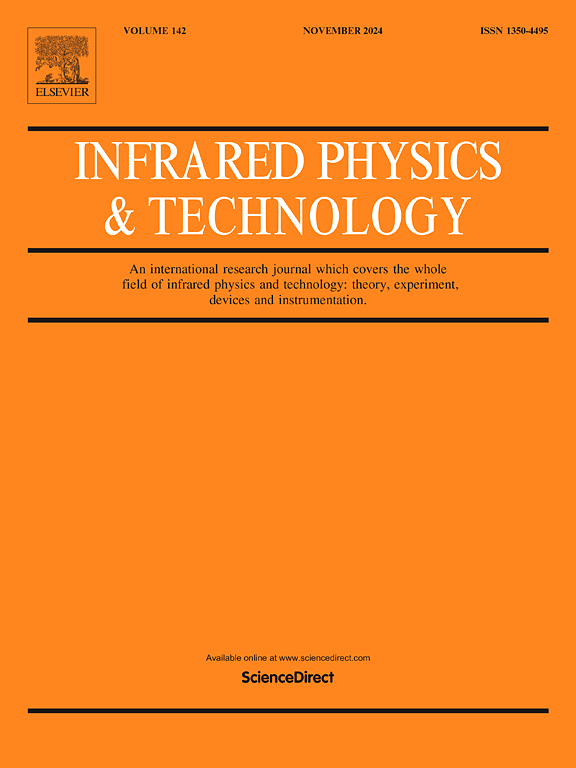基于厚板干涉图样的晶体硅红外折射率测定
IF 3.1
3区 物理与天体物理
Q2 INSTRUMENTS & INSTRUMENTATION
引用次数: 0
摘要
通过对0.25 mm厚晶片干涉图样的测量,确定了晶体硅红外区折射率的精确值。在一个特定的入射角下观察到的干涉图样使我们能够精确地确定光学厚度,然而,晶圆厚度和折射率的乘积给出了光学厚度,可以用更差的精度来确定。这一限制可以通过使用几个入射角来克服,因为如果考虑干涉图案周期对入射角的依赖,就有可能以高精度确定厚度和折射率。FTIR红外椭偏仪用于斜入射角测量,而FTIR分光光度计用于近法向入射角测量。为了正确解释实验数据,必须考虑仪器的有限光谱分辨率和光束散度以及样品厚度不均匀性的影响。这些影响显著地改变了观测到的干涉模式。完成这项任务所需的公式是在这项工作中推导出来的。用所提方法测定的晶体硅折射率值与用最小偏差法测定的值相差小于10−3。本文章由计算机程序翻译,如有差异,请以英文原文为准。
Determination of refractive index of crystalline silicon in the infrared region on the basis of interference pattern observed in thick slab
The precise values of the refractive index of crystalline silicon are determined in the infrared region based on the measurements of the interference pattern in 0.25 mm thick wafer. The interference pattern observed for one particular incidence angle allows us to determine the optical thickness precisely, however, the wafer thickness and refractive index, whose product gives the optical thickness, can be determined with much worse accuracy. This limitation could be overcome by using several incidence angles because if the dependence of the period of interference pattern on the incidence angle is considered, it is possible to determine both the thickness and refractive index with high accuracy. The FTIR infrared ellipsometer is used for measurements at oblique incidence angles, while the FTIR spectrophotometer is utilized for measurements at near-normal incidence. To correctly interpret the experimental data, it is necessary to consider the influence of the finite spectral resolution and beam divergence of the instruments and the thickness non-uniformity of the sample. These effects significantly alter the observed interference patterns. The formulae needed to accomplish this task are derived in this work. The values of the refractive index determined using the proposed method for the crystalline silicon show differences smaller than from the values obtained by the minimum deviation method.
求助全文
通过发布文献求助,成功后即可免费获取论文全文。
去求助
来源期刊
CiteScore
5.70
自引率
12.10%
发文量
400
审稿时长
67 days
期刊介绍:
The Journal covers the entire field of infrared physics and technology: theory, experiment, application, devices and instrumentation. Infrared'' is defined as covering the near, mid and far infrared (terahertz) regions from 0.75um (750nm) to 1mm (300GHz.) Submissions in the 300GHz to 100GHz region may be accepted at the editors discretion if their content is relevant to shorter wavelengths. Submissions must be primarily concerned with and directly relevant to this spectral region.
Its core topics can be summarized as the generation, propagation and detection, of infrared radiation; the associated optics, materials and devices; and its use in all fields of science, industry, engineering and medicine.
Infrared techniques occur in many different fields, notably spectroscopy and interferometry; material characterization and processing; atmospheric physics, astronomy and space research. Scientific aspects include lasers, quantum optics, quantum electronics, image processing and semiconductor physics. Some important applications are medical diagnostics and treatment, industrial inspection and environmental monitoring.

 求助内容:
求助内容: 应助结果提醒方式:
应助结果提醒方式:


